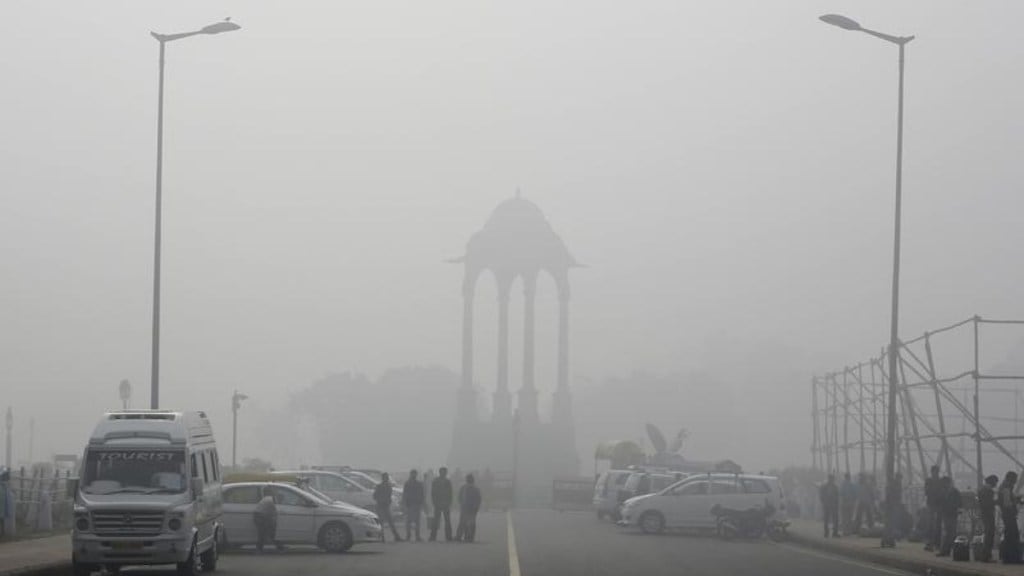By Ashok Gulati
With the air quality index (AQI) for PM 2.5 breaching the 400 mark in Delhi for most of the days of this week, the Supreme Court bench came down heavily on the adjoining states of Punjab, Haryana, Rajasthan and Uttar Pradesh. The bench has asked them to stop burning in paddy stubble in the fields forthwith, and then find long-term solutions. It also suggested making the local Station House Office (SHO) responsible for its implementation. How far this will be implemented remains to be seen.
But the fact that, in Punjab, when some government officials went to the villages to stop stubble-burning, there are reports that they were forced to light up farm fires! It speaks of a major breakdown of law and order. Could the Supreme Court also suggest what punishment be given to the local SHO or even the chief secretary who fail to douse farm fires?
Containing farm fires is critical if Delhiites have to breath without serious harm to their health. On November 7, as per the Decision Support System for air quality management in Delhi, biomass burning (mainly stubble burning) accounted for 37.85% of pollution, followed by other polluting items in the National Capital Region (22.64%).
Notably, Delhi’s transport accounted for just 12.67%, and Delhi’s construction and dust accounted for less than 3%. Clearly, the first and foremost action has to be in controlling stubble burning from neighbouring states, most notably Punjab, where it is most rampant.
If farm fires are not controlled, Delhiites are likely to lose 11.9 years of their life, as per the Air Quality Life Index report (2023) of the University of Chicago’s Energy Policy Institute. Given that our life expectancy hovers around 71 years, losing 11.9 years of life for a population of about 22 million people in the National Capital Territory, is like killing 3.7 million people through polluted air. And this stretches to many other cities in northern India, even beyond Delhi.
How can we stop stubble burning? Many schemes have been tried to help the farmers in uprooting the entire stubble after harvesting paddy, from making bales for boilers to using it for mulching, etc. Smart Happy Seeders showed a little promise, but have not checked stubble burning at scale.
The ultimate answer is that paddy in the Punjab-Haryana belt needs to be drastically cut to almost half its current area under cultivation—from 4.7 million hectares (m ha) to just 2.5 m ha. The Supreme Court judges rightly pointed out that it is not a suitable crop for this region and is depleting the water table fast. In a district like Sangrur—the constituency of the current chief minister of Punjab—the water table has fallen by 25 metres in the last 20 years. And, it is in this district that the farm fires number the most!
What is still not counted is how much greenhouse gas (GHG) paddy is emitting in Punjab. In a forthcoming study from ICRIER on Low Carbon Agriculture by Reena Singh and this author, paddy cultivation in Punjab is estimated to produce at least 5 tonnes of CO2 eq/ha. This is also a silent killer. In this study, Punjab farmers are estimated get a subsidy on paddy cultivation to the tune of almost Rs 30,000/ha, through free power and highly subsidised urea and other chemical fertilisers. This subsidy constitutes roughly one-third of the profits from paddy cultivation in Punjab—the root cause behind farmers sticking to paddy even when they know they are damaging aquifers. This gets reinforced with the open-ended procurement of paddy by state agencies for the Food Corporation of India (FCI).
How do we wean farmers in the Punjab-Haryana belt away from paddy? Here are some suggestions:
Give a subsidy of, say, Rs 25,000/ha to farmers switching from paddy to pulses, oilseeds and millets, or even maize. This will help create a crop-neutral incentive structure and will not cost the government as it will save that subsidy from the current paddy cultivation.
Incentivise the private sector to set up ethanol plants based on maize, starting from Sangrur, where the water table depletion needs to be arrested as soon as possible. This will help create a market for ethanol blending with fossil fuels, and help in lowering the air pollution through vehicular traffic.
State agencies should reduce the paddy procurement from those farmers burning crop stubble, and also in those blocks where water table is depleting fast.
FCI should make it clear that they will not pay more than 3% on top of the MSP for any mandi fee, commissions for arthiyas, etc. This should be uniform across states.
Lastly, the prime minister needs to sit down with the chief ministers of the states adjoining Delhi and offer a package to move towards more nutritious crops such as millets, oilseeds, and pulses, by assuring a procurement of these at MSP. We are short of all these crops that are more nutritious, and more nature-friendly. Our reliance on rice and wheat for the Public Distribution System is excessive, causing diabetes and harming environment. Of more than 500,000 fair price shops, at least 10% (50,000) can be made ‘nutrition hubs’ where these nutritious crops will also be supplied along with wheat and rice. The consumers should be given a choice whether they want rice and wheat or other crops costing the same money through food vouchers. This will create a market that is more diversified, save water, minimise GHG emissions from crop sector, and reduce pollution in Delhi coming from stubble burning.
Delhi’s pollution will also have to tackled by replacing modes of transport, from fossil-fuel based vehicles to electric vehicles, or at least 20% ethanol blending in all of Delhi’s petrol pumps. Hope Delhi’s policymakers can rise to this challenge and save us from the deadly pollution.
The author is a distinguished professor at ICRIER.
Views are personal.
